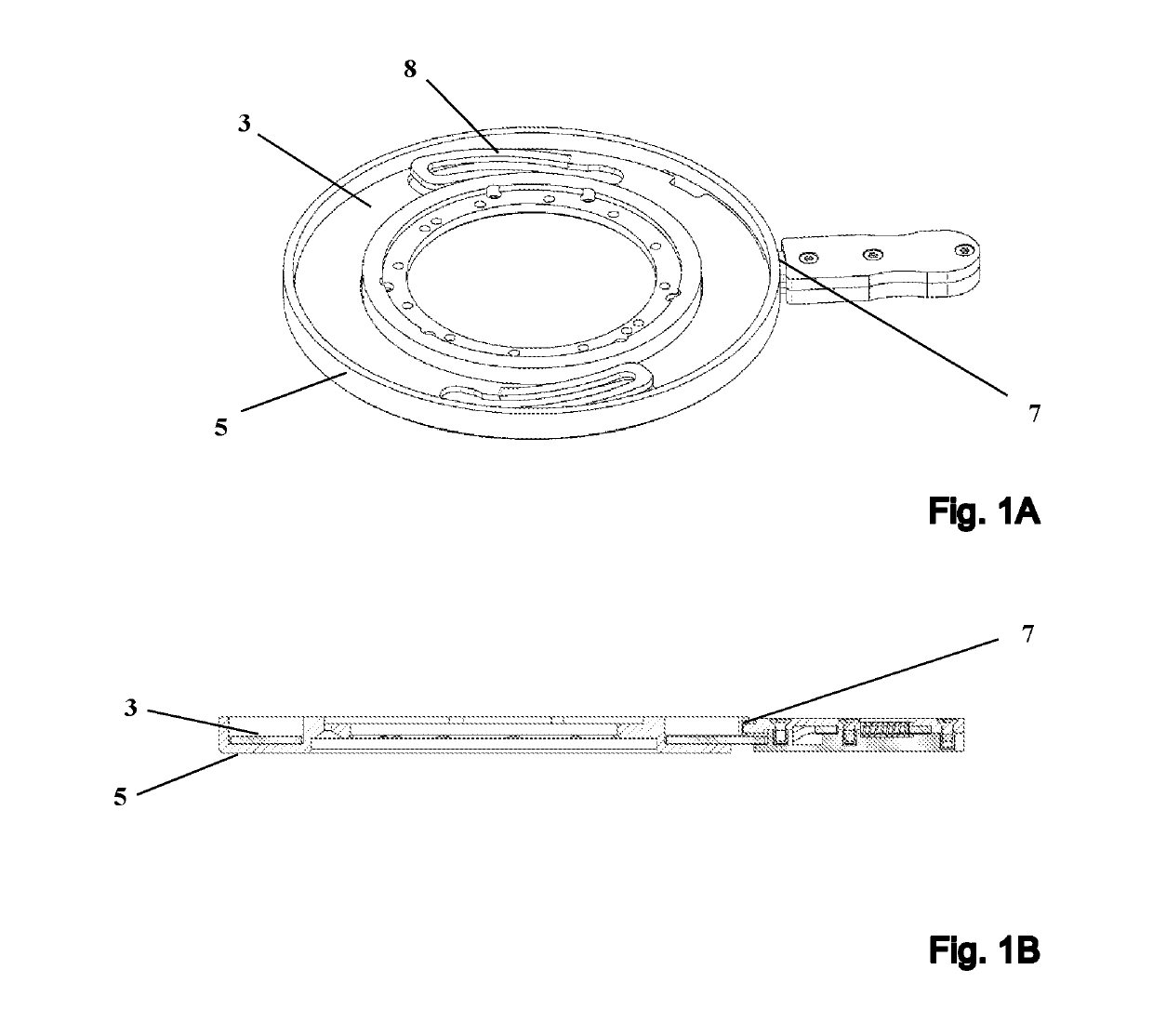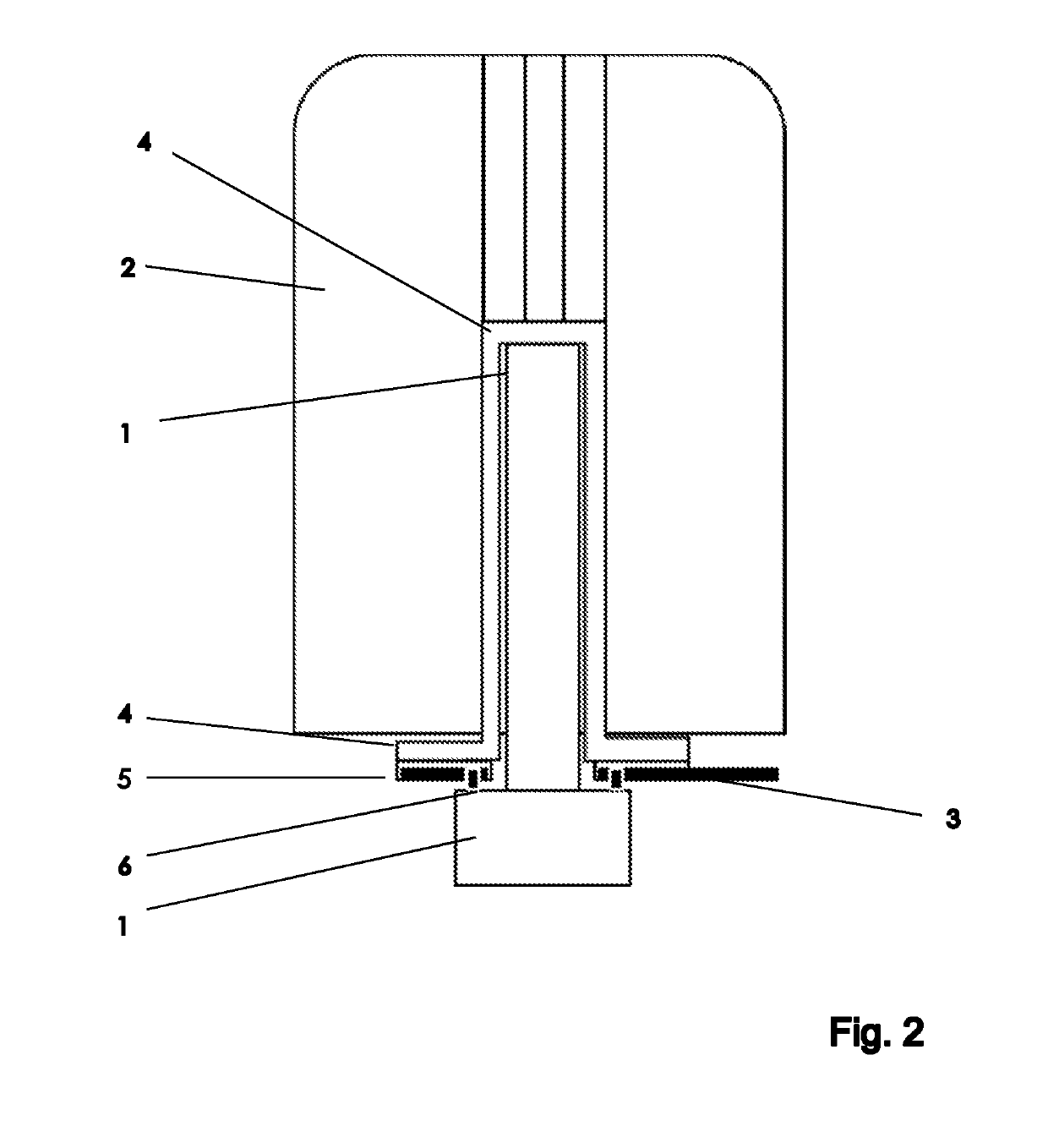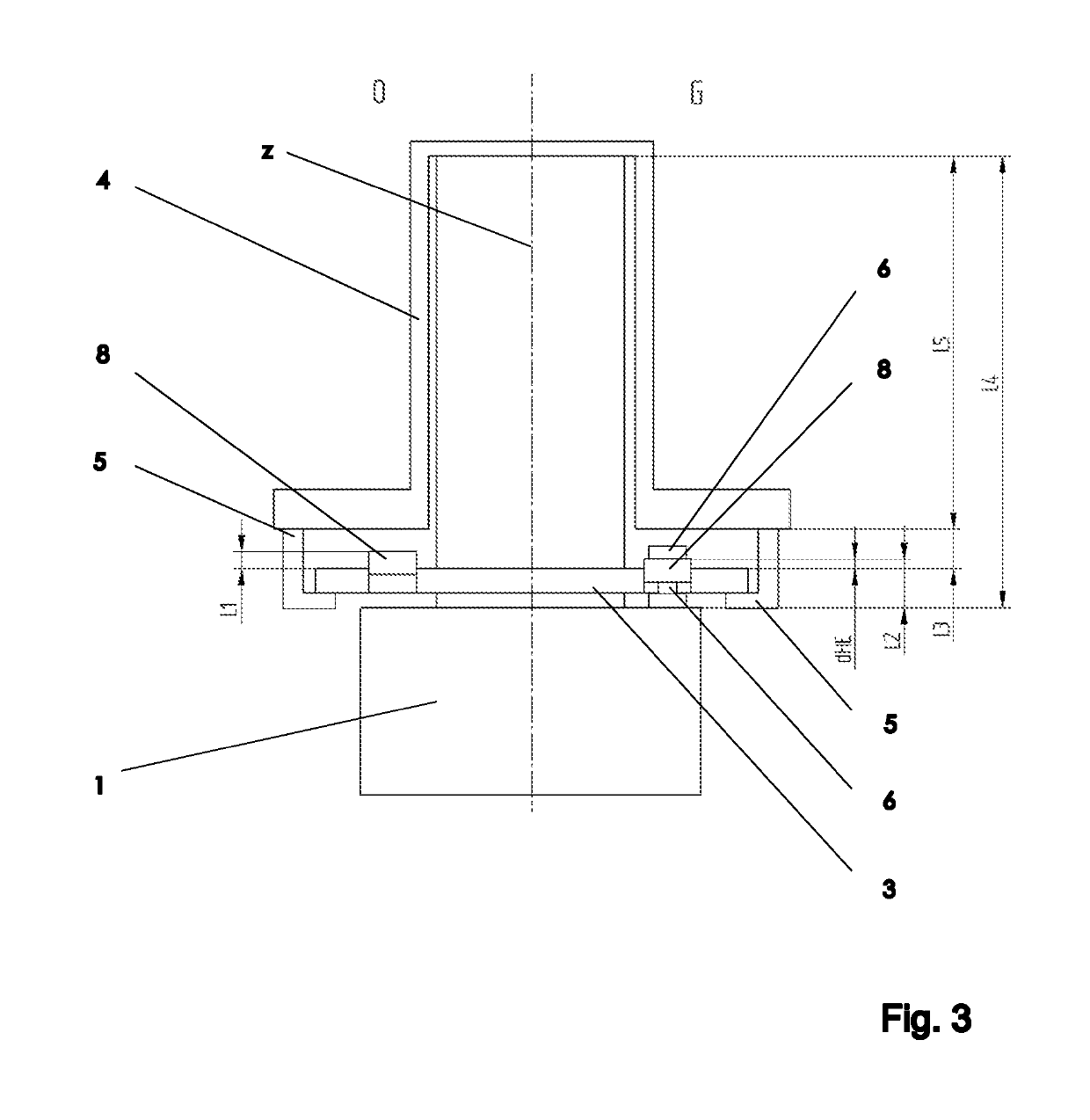Fastening device for an NMR probe having a quick-release fastener
a technology of nmr probe and fastening device, which is applied in the direction of geological measurements, nuclear magnetic resonance analysis, reradiation, etc., can solve the problems of inconvenient use, fixed connection, and inability to adapt to later position changes, so as to reduce material costs and manufacturing costs, and reduce the quality of nmr measurements
- Summary
- Abstract
- Description
- Claims
- Application Information
AI Technical Summary
Benefits of technology
Problems solved by technology
Method used
Image
Examples
Embodiment Construction
[0039]In general, the techniques described herein relate to a modified fastening device for releasably fastening an NMR probe 1 to an NMR magnet 2. The main axis of the NMR magnet 2 extends in parallel with a z-direction. To fasten the NMR probe 1 to the NMR magnet 2, a discoid insert 3 is pushed from below against a retention system 4 that is rigidly connected to the lower face of the NMR magnet 2. The NMR probe 1 is pushed against the lower face of the insert 3 that is remote from the retention system 4 until the upper end of the probe 1 comes into contact with the upper end of the retention system 4. Rotating the insert 3 about its disc axis (e.g., in parallel with the z-direction) establishes a rigid mechanical connection between the probe 1 and the insert 3 and between the insert 3 and the retention system 4. The discoid insert 3 is designed to establish a form-fitting and variable-force connection between the probe 1 and the retention system 4, using a spring element 8.
[0040]I...
PUM
 Login to View More
Login to View More Abstract
Description
Claims
Application Information
 Login to View More
Login to View More - R&D
- Intellectual Property
- Life Sciences
- Materials
- Tech Scout
- Unparalleled Data Quality
- Higher Quality Content
- 60% Fewer Hallucinations
Browse by: Latest US Patents, China's latest patents, Technical Efficacy Thesaurus, Application Domain, Technology Topic, Popular Technical Reports.
© 2025 PatSnap. All rights reserved.Legal|Privacy policy|Modern Slavery Act Transparency Statement|Sitemap|About US| Contact US: help@patsnap.com



